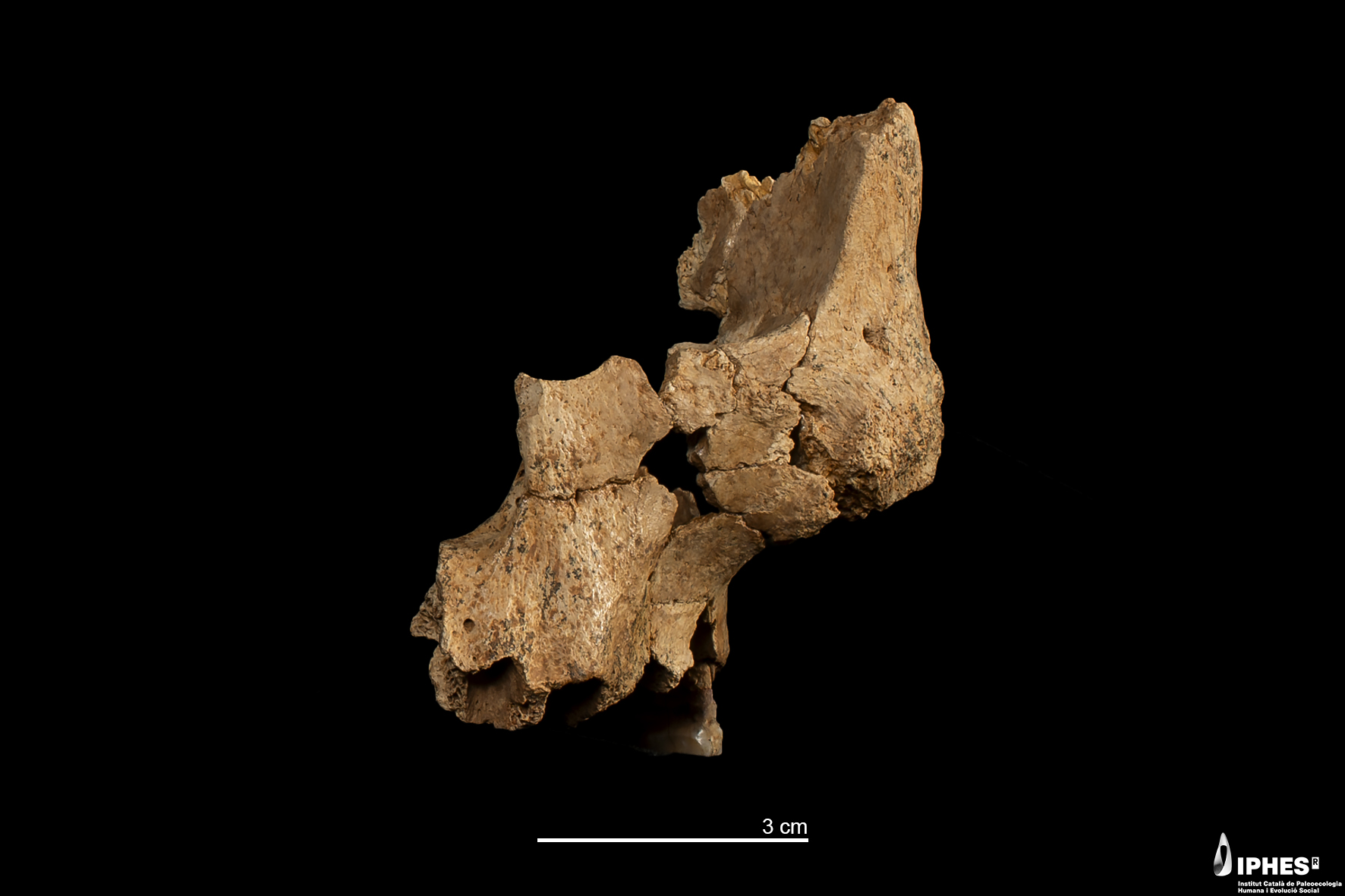The oldest hominid facial bones ever discovered in Western Europe have revealed that the region was initially inhabited by a previously unknown human lineage. Dated to between 1.1 and 1.4 million years ago, the skeletal remains don’t match those of Homo antecessor, which until now was thought to have been the first to reach this part of Eurasia.
ADVERTISEMENT
Found at the Sima del Elefante Site in the Sierra de Atapuerca, northern Spain, the prehistoric face and its long-dead owner have been dubbed “Pink”. Displaying some resemblance to Homo erectus, the specimen has been assigned as Homo affinis (aff.) erectus, pending further analysis and categorization.
Dr Rosa Huguet, who coordinated excavations at the site, told reporters that the discovery “introduces a new actor in the story of human evolution in Europe, Homo affinis erectus. This finding allows us to assert that during the early Pleistocene more than one human species lived in Europe, and that the first hominid to inhabit Western Europe was not Homo antecessor as we previously believed.”
“We cannot be conclusive with assigning it or even ruling out that it is Homo erectus,” added Dr María Martinón-Torres, a co-author of a new study describing the find. “So Homo aff. erectus highlights this closeness to Homo erectus but leaves open the possibility that it may also belong to an entirely different species than Homo erectus.”
The discovery helps to fill in some of the gaps in our understanding of humanity’s journey out of Africa. To date, the oldest hominid remains outside of the continent come from Romania and Georgia, with the latter assemblage – known as the Dmanisi hominids – dated to 1.8 million years ago.
Officially known as Homo georgicus, these remains are widely considered to represent a primitive form of Homo erectus, the human species that first colonized large parts of Eastern Europe and Asia.
ADVERTISEMENT
In Western Europe, however, the oldest recognizable human fossils belong to Homo antecessor, a common ancestor of modern humans and Neanderthals. Discovered in 1994 at the Gran Dolina site – which lies no more than 250 meters (820 feet) from Sima del Elefante in the Atapuerca complex – these fossils have been dated to between 800,000 and 900,000 years ago.
However, as well as being considerably older than this, Pink also displays radically different facial morphology, thus suggesting that a different human species was present in the area long before H. antecessor.
“Homo antecessor shares with Homo sapiens a more modern-looking face and a prominent nasal bone structure, whereas Pink’s facial features are more primitive, resembling Homo erectus, particularly in its flat and underdeveloped nasal structure,” said Martinón-Torres.

The fossilized midface of Homo aff. erectus.
Image credit: Maria D. Guillén / IPHES-CERCA
“We also highlight that this population is different from the earliest hominins that have been documented outside of Africa, which are those represented in Dmanisi,” she adds. “[Pink] is somewhere in an evolutionary space in between the earliest hominins found outside Africa […] and Homo antecessor. So I think the key finding is that we are documenting for the first time a hominin population that we did not know we had in Europe.”
ADVERTISEMENT
Stone tools and butchered animal remains found at the site indicate that Homo aff. erectus was a competent hunter, although the study authors believe that around one million years ago, the region saw a turnover in the human population as the species was replaced by H. antecessor. What’s unclear, however, is whether the two co-existed for a period or Homo aff. erectus completely disappeared before the arrival of the later hominid.
Martinón-Torres says the team are now hoping to find more fossils “that will help us to fully understand who these hominins were, where they come from, how they related and interacted with later populations […] and what the eventual fate was.”
The study is published in the journal Nature.
Source Link: 1.4-Million-Year-Old Human Face Is Oldest In Western Europe